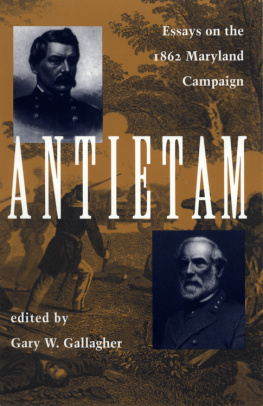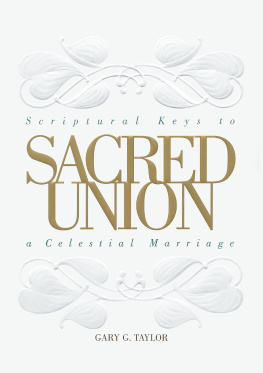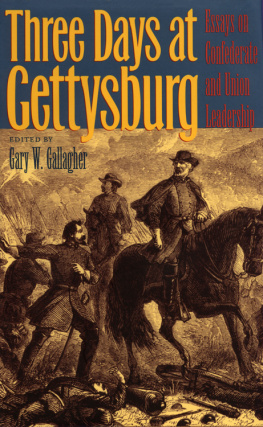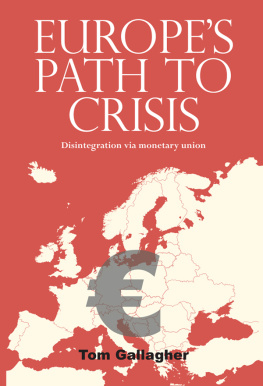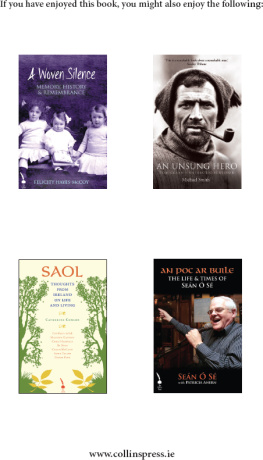Gary W. Gallagher - New Perspectives on the Union War
Here you can read online Gary W. Gallagher - New Perspectives on the Union War full text of the book (entire story) in english for free. Download pdf and epub, get meaning, cover and reviews about this ebook. year: 2019, publisher: Lightning Source Inc. (Tier 2), genre: Politics. Description of the work, (preface) as well as reviews are available. Best literature library LitArk.com created for fans of good reading and offers a wide selection of genres:
Romance novel
Science fiction
Adventure
Detective
Science
History
Home and family
Prose
Art
Politics
Computer
Non-fiction
Religion
Business
Children
Humor
Choose a favorite category and find really read worthwhile books. Enjoy immersion in the world of imagination, feel the emotions of the characters or learn something new for yourself, make an fascinating discovery.

- Book:New Perspectives on the Union War
- Author:
- Publisher:Lightning Source Inc. (Tier 2)
- Genre:
- Year:2019
- Rating:5 / 5
- Favourites:Add to favourites
- Your mark:
- 100
- 1
- 2
- 3
- 4
- 5
New Perspectives on the Union War: summary, description and annotation
We offer to read an annotation, description, summary or preface (depends on what the author of the book "New Perspectives on the Union War" wrote himself). If you haven't found the necessary information about the book — write in the comments, we will try to find it.
New Perspectives on the Union War — read online for free the complete book (whole text) full work
Below is the text of the book, divided by pages. System saving the place of the last page read, allows you to conveniently read the book "New Perspectives on the Union War" online for free, without having to search again every time where you left off. Put a bookmark, and you can go to the page where you finished reading at any time.
Font size:
Interval:
Bookmark:
NEW PERSPECTIVES ON THE UNION WAR
THE NORTHS CIVIL WAR
Andrew L. Slap, series editor
New Perspectives on the Union War
Gary W. Gallagher and Elizabeth R. Varon, Editors
FORDHAM UNIVERSITY PRESS
NEW YORK 2019
Copyright 2019 Fordham University Press
All rights reserved. No part of this publication may be reproduced, stored in a retrieval system, or transmitted in any form or by any meanselectronic, mechanical, photocopy, recording, or any otherexcept for brief quotations in printed reviews, without the prior permission of the publisher.
Fordham University Press has no responsibility for the persistence or accuracy of URLs for external or third-party Internet websites referred to in this publication and does not guarantee that any content on such websites is, or will remain, accurate or appropriate.
Fordham University Press also publishes its books in a variety of electronic formats. Some content that appears in print may not be available in electronic books.
Visit us online at www.fordhampress.com.
Library of Congress Cataloging-in-Publication Data available online at https://catalog.loc.gov.
Printed in the United States of America
21 20 19 5 4 3 2 1
First edition
Contents
Gary W. Gallagher and Elizabeth R. Varon
Frank J. Cirillo
Tamika Y. Nunley
Jack Furniss
William B. Kurtz
Jesse George-Nichol
D. H. Dilbeck
Michael T. Caires
Peter C. Luebke
NEW PERSPECTIVES ON THE UNION WAR
Gary W. Gallagher and Elizabeth R. Varon
The United States does and must assert its authority wherever it once had power, General William T. Sherman wrote the mayor of Atlanta after capturing that city in September 1864. Such is the National Feeling, added the general: This Feeling assumes various shapes, but always comes back to that of Union. New Perspectives on the Union War explores, at a wide array of points along the political spectrum, the many forms patriotic sentiment took in the loyal states during the Civil War. As a group, the essays in this volume demonstrate that while there was a broad consensus the war was fought, or should be fought, for the cause of the Union, there was bitter disagreement over how to define that causea debate not only between political camps but also within them. Among ardent opponents of slavery, those debates concerned means and ends. Defenders of Lincoln saw emancipation as the way to fulfill the unmet promise of the Union, while the presidents critics saw emancipation as an end in itself and warfare as an illegitimate means to sustain an unfree Union. In the broad middle of the political spectrum, self-styled moderates focused on the threat the Southern Slave Power oligarchy posed to the free-labor republicto economic development, majority rule, and moral disciplineand debated both which policies and what sort of political tone would bring reunion on the loyal states terms. Among conservatives, opposition to emancipation and centralization mixed with nostalgia for an imagined past, and debates focused primarily on how to differentiate the Union government from the Lincoln administration and how to support the first while rejecting the second.
The eight essayists in this collection examine disparate elements of the loyal citizenry. Each also engages with the scholarly literature in ways made evident in their notes and in the bibliographical essay that closes this volume. Frank J. Cirillo and Tamika Y. Nunley address the antislavery end of the political spectrum; Jack Furniss and William B. Kurtz the more conservative segments of public opinion; and Jesse George-Nichol, D. H. Dilbeck, Michael T. Caires, and Peter C. Luebke the political center. The essays provide new insights into well-known figures such as Secretary of the Treasury Salmon P. Chase, the political philosopher Francis Lieber, the African American author/entrepreneur Elizabeth Keckly, the abolitionist Abby Kelley Foster, New York governor Horatio Seymour, and Attorney General Edward Bates. They also offer the perspectives of common soldiers, of the partisan press, of the clergy, and of social reformers. By showing how various interest groups claimed the mantle of moderation and tacked to the center, the essays offer a counterweight to recent scholarship that emphasizes the influence of Radical Republicans and Copperhead Democrats within their respective political parties.
Frank Cirillo leads off by exploring the idealistic, aspirational strain of Northern nationalism that was dominant among reformers. Abolitionists and Radical Republicans answered conservative calls for the Union as It Was by envisioning the Union as it might be, purged of slavery and committed to its professed creed of equality. Cirillo demonstrates that these reformers were divided into factions. The vast majority of antislavery immediatists, following the lead of William Lloyd Garrison, embraced the Union war and the chance to cast emancipation as a military necessity and nation-saving measure. But a small and vocal faction led by the formidable husband-and-wife team of Stephen and Abby Kelley Foster insisted that moral ends required moral means and refused to support the Union war until it explicitly became a fight for emancipation. Clinging to the image of abolitionists as uncompromising purists, the Fosters fought against the emerging pro-Lincoln consensus in abolitionism; even after Lincoln issued the Emancipation Proclamation, they cast about for more radical politicians to replace him as the head of the Union war effort. These divisions over wartime means and ends translated into distinct positions on Reconstruction. While those in Garrisons camp celebrated wartime emancipation as the apotheosis of the abolition movement and a mission accomplished, the Fosters regarded the antislavery struggle as unfinished until blacks exercised full citizenship and prejudice itself was uprooted.
Tamika Nunleys essay on Elizabeth Keckly highlights the theme of black leadership in the Union war effort. While Keckly is best known for her role as Mary Todd Lincolns seamstress and chronicler of the Lincoln White House, Nunley brings to light her wartime political activism on behalf of black refugees and soldiers. Nunley shows how Keckly, through her leadership of the Contraband Relief Association, set in motion a vision for black equality and citizenship. Kecklys social and political organizingher skillful mobilization of the press, the churches, and indeed of her own celebrityboth addressed the dire material conditions in refugee camps and projected a message of self-determination and independence to the freedpeople of the District of Columbia. Like Cirillos essay, Nunleys points up the contingent nature of antislavery gains during the war. Black freedom in Washington, DC, was tenuous, as proslavery whites resisted complying with the 1862 DC abolition act. Keckly and her fellow female activists responded by promoting education and enfranchisement, invoking black mens and womens patriotism as a pillar of a more perfect Union.
Jack Furnisss essay accounts for the political success of the influential Democrat Horatio Seymour, who secured the governorship of New York in 1862. Furniss explains why a significant portion of the electorate was drawn to the Democrats message in 1862. Seymour appealed to voters, including swing voters such as former Whigs, by trumpeting the legitimacy of partisan opposition in wartime; by calling for a limited, constitutional war of conciliation, to speed restoration of the Union after Northern victory; and by rejecting Republican efforts to label all Democrats as anti-war and insisting instead that Northern politics pitted patriotic conservatives against disunionist radicals. In a careful balancing act, Seymour criticized the handling of the war but not the soldiers and generals who fought itand he sought to claim Lincoln for conservatism by shielding the president from the influence of radicals. Seymours hope that the war could be won without revolutionary measures against slavery or impeding the constitutional liberties of the North became increasingly chimerical as the war ground on. But, Furniss cautions, we should not project the stridently anti-Lincoln Copperhead rhetoric of 18631865 back in time, onto the wars early phases; mainstream Democrats initially tapped into a vast reservoir of national feelings to harness its latent electoral appeal. Seymours fealty was to a Union that could command the affection and loyalty of conservatives in the North, Border States, and South.
Next pageFont size:
Interval:
Bookmark:
Similar books «New Perspectives on the Union War»
Look at similar books to New Perspectives on the Union War. We have selected literature similar in name and meaning in the hope of providing readers with more options to find new, interesting, not yet read works.
Discussion, reviews of the book New Perspectives on the Union War and just readers' own opinions. Leave your comments, write what you think about the work, its meaning or the main characters. Specify what exactly you liked and what you didn't like, and why you think so.

